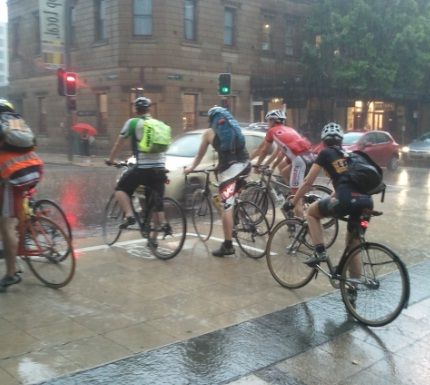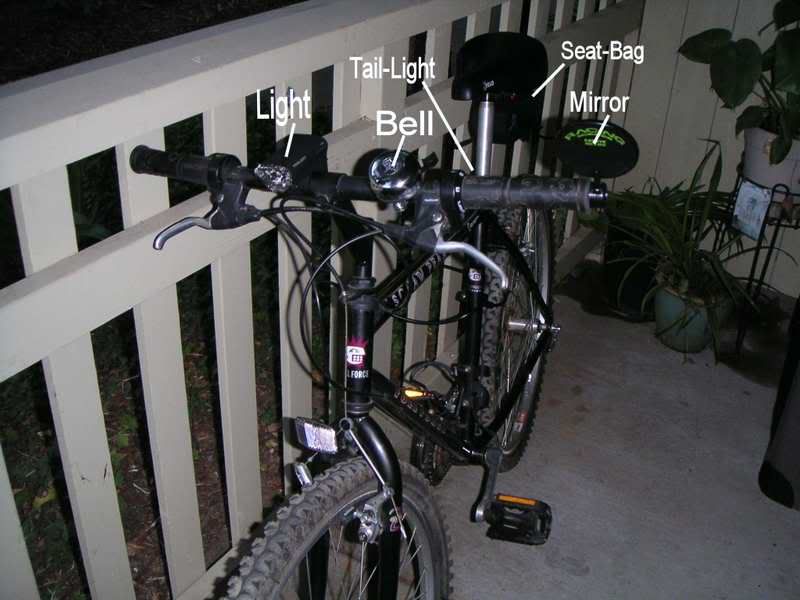Honda Motor Company started out under a man who loved engines. Soichiro Honda was a brilliant and effusive man, apparently, and under his leadership Honda Motor Company grew from a motorized bicycle company to a world leading car company known for its quality and reliability.
Honda built the Cub and SuperCub bikes, the most popular single model of motorized transportation on Earth. They were cheap and you didn't have to pedal and the wheels were big enough to deal with crappy dirt roads across Asia. The shields kept the mud off.
Honda's next big achievement was a twin cylinder 360cc 4-stroke engine which gave them a modest motorcycle. Nothing fancy, but it worked most of the time.
Then Honda broke new ground and crushed Triumph's dominating 3-cylinder (triple) with an ultra-reliable inline 4-cylinder that became the new standard for the motorcycle industry, once they upgraded displacement to 750cc.
These are great things. That engine led to development of better engines for their small cars division, which eventually lead to the CVCC, the Civic. Later, the Honda Accord was designed on a similar inline-4 engine and added a couple more doors so it was a proper Sedan. A car so successful that Detroit is now a Post-Apocalyptic Ruin worthy of zombie flicks and First Person Shooter games, only with real bullets and a really high murder rate. Honda has flourished by being reliable, always starting, and meeting their market's needs.
Sadly, with his passing, their Motorcycle branch has drifted off, lost touch with riders. Almost like they're not trying anymore. Recently, last year, a new engine came out to replace the venerable 230 cc air cooled used for its cheapest bikes, the Rebel and Enduro.
The new 250cc EFI is a nice modular engine and they put it in their Ninja-competitor, the
CBR250R. Its reviewed well, and its cheap, about $4500 with ABS. Its a good starter bike that's freeway capable and 75 mpg, with good available torque thanks to the single cylinder engine.
They have finally gotten around to putting it in the
Enduro. The older 230cc was notoriously anemic and unable to do much at all, according to posts I've read about it from owners. Considering you can buy a Kawasaki KLR-650 with LOTS of torque and plenty of suspension for around $4K new, why bother with the old Honda? So I'm glad they've gone and updated this.
Here's where Honda is getting it wrong, however. They offer a few models of scooter for about double what they're worth. The Metropolitan is cute, but its Useless outside the flatlands of Davis or Sacramento. California has HILLS. Americans aren't going to pay $2K for a 49cc that isn't a Vespa. I'm sorry, we just won't. Its not transportation if it can't pull a hill at 35 mph. You (Honda) need to CUT YOUR PRICES and bring over the better bikes. The Metropolitan with front disc brakes and a 110cc EFI engine? That would be interesting, and useful. That same bike with slightly bigger wheels (12"), same vintage styling (chrome pretty), but the 125cc EFI from the PCX? That would sell.
Bring over the EFI Supercub you're selling everywhere but here. You can compete legitimately with Vespa. And your parts are easier to get because its a quick and frequent trip across the Pacific. Load a crate on a containership bound for Alameda or Benecia. You can do it! California can't really use a 49cc bike. We need minimum 110cc. And that needs to be around $600 out the door. I know those bikes cost around $150 to make. Take a small cut in the profits and make it on volume. This is an EASY DECISION. The new Elite you want $3K for? That would sell at $1500. Remember how much gas you can buy for $1500. The scooter, with all its discomforts, needs to be a legitimate argument for fuel economy vs actual volume of gasoline.

The Ruckus? With only 49cc available what was the point? Put a 125cc EFI from the PCX in there so it can climb a hill. Mountain people want to use those. Try competing with Yamaha's Zuma directly instead of giving up. Did any of your engineers point that out? If they did, promote them and give them a raise. Yes Men kill companies dead. Promote your No-Men. They tend to be smarter and more courageous.
The Pacific Coast 800 was a legendary machine. There are blogs of amazing trips on those. The 800cc is a proper long running engine. What made it good was reliability and carrying capacity, built in luggage.
Your Silverwing is a good machine, but it costs as much as a small car. What was the thought process there? Does anyone even buy that when they could get a proper cruiser or highway bike? Drop the price by half and you'll be competing with the better Vespas for the Camry/Accord drivers crowd. Include the luggage free. Make it easy to carry the groceries home, or the laptop to work. A place to store a full face helmet in grownup American head size.

Now, the SH150i is a good idea priced out of the market. It's a scooter. At $4500 that's $2500 too much for what it is. For that kind of money, what's stopping you from putting the new 250cc EFI into an updated frame, like the SH150i so the engine is on the frame, it retains automatic transmission and the improved suspension, and sell it for $3400 so it competes with the Aprilia Sportcity 250. Meet your market. People with money and wanting comfort would consider that. Cut the price of the existing SH150i to $2000 and it would sell. You can put more Japanese people to work building that. It would be a viable scooter for SF Bay Area, climb those hills.
The more bikes on the road, the more people want to buy them and watch for them so the accident rate drops. The reason I'm so fussy about pricing of scooters is twofold.
1. Two men can lift a parked scooter into the back of a pickup truck and drive off with it. Stealing a scooter is going to be COMMON. Ergo, it has to be cheap to replace, and thus lowering its value for theft.
2. They're cheaper EVERYWHERE else, in every country but here. The same model in Mexico is a few hundred bucks, not a few thousand. I feel insulted. Scooters sold in America aren't better quality. We don't get parts more easily. They aren't fancier. That's just ripoff pricing.
People are poor in America. All our jobs went to China and India. Half of college graduates are unemployed and living with their parents. It used to be NONE. People are seriously considering parking their car and riding out in the weather, sacrificing safety for fuel costs. They won't buy it unless its cheap enough to make sense. And you can buy a lot of gas for the average $3K scooter. A $500 scooter is a better argument. A $1000 scooter with a better engine (125cc) makes way more sense.
Finally, you (Honda) need to seriously offer more of your models here. Give us the new SuperCub, with the Elite's 108cc EFI engine. Nobody sells that anymore. The Symba wasn't that great and is out of business here anyway. The EFI version you've got would be dandy for $1100. Can't cost more than $160 to make. The rest is shipping and profits. Keep the greed modest and your business will grow. Don't you want more customers?

Give us the updated 400SS. Its a beautiful bike but it needs a better engine than that 1970's air-head with the sloppy rings and tolerances. It doesn't need to be a torque monster. A 400 or 500cc would be fine with a discreet radiator and fake water/air cooling jacket. Harley did that. Fix the engine so it always starts instead of being worthy of multiple YouTube videos about starting it. Keep the 1960s looks of a standard UJM (Universal Japanese Motorcycle). Kawasaki couldn't sell their W650 because they hardly shipped any over and they priced it high compared to Harley. Misread their market. If Kawasaki had sold that for $5500 instead of $9600 it would have gained fans with cash to spend. Do better. The 400SS is beautiful in black with a little chrome. I've seen the videos once it was started. It would SELL as the big brother of the Rebel. Its enough for a finisher bike. Offer some performance parts so there's an upgrade path people would invest in. That gains you some additional profits. This is EASY STUFF. Don't your Marketing people tell you this?

Give us the
Honda Wave 125cc, with 3-4 inches of suspension travel so it will work on our crappy roads. Sell it for scooter money, say $1800 and they'll sell well. The entire Midwest and Mountain region would look at that seriously as a rural vehicle and kid-college commuter. Compete with the other bikes in its class like the Sachs MadAss 125. Its a better and more refined version of the SuperCub. I know there's a ton of aftermarket parts. You could be selling those here, making MONEY from those parts. Authorized aftermarket gives you a percentage at your Dealerships. Train your Honda Mechanics at the car dealerships on bikes. One car bay is enough space for 3 bike repair stations. It adds up.
Put the 250cc EFI engine in your
Rebel and offer a Standard instead of just a starter-Cruiser. Call it the Hipster, if you want to be really coy. There are people buying up the old Honda 360 twins and fixing a few things, selling them used for $3K to hipsters in SF and San Jose.
That's a MARKET to exploit. Offer them a UJM Standard with the 250 EFI and you'll sell thousands a year on the West Coast alone. Compete with the Suzuki TU250X. They're very similar bikes otherwise. The TU has great reviews and people are enthusiastic because it does what the old UJM standard was supposed to do: it works. Its easy to ride. It doesn't make your behind ache. Your marketing idiots (please seppuku!) may be telling you that there's no market in America. They're wrong. There are millions of us adapting to higher unemployment, to part time jobs, to lower pay, to higher education debt. We're all getting poorer.

That little 250 EFI engine would make a good mini-truck motor, and if you have a dealer give a test ride to Western state governors (Washington, Idaho, Nevada, Oregon) you might be able to convince them to authorize their legal use on roads under Emergency Measures to deal with the ongoing fuel crisis. I think with those for repairmen and city services fleets there's potentially a lot of profits on volume and service contracts. Maybe that seems outside the scope of a car company, but when hasn't the Honda Civic been a bone of contention for the Big 3 of Detroit? If nothing else, a concept car with a small engine and ultralight materials would get people THINKING about it. If you build the engines or assemble the cars in America, it gets around the "made in America" requirement many cities and states have. You're already doing that with the Accord and Civic.

And tell those nice people at the Car branch to release the Diesel Accord already. If you wait too long, everyone will just buy the VW Jetta or Audi or Subaru Diesel and then where will you be? SOL. (sh17 outta Luck). Stop making excuses and start remembering what Soichiro said: You meet the nicest people riding on a Honda.
Sincerely,
The Heretic
Honda Car Owner
















































